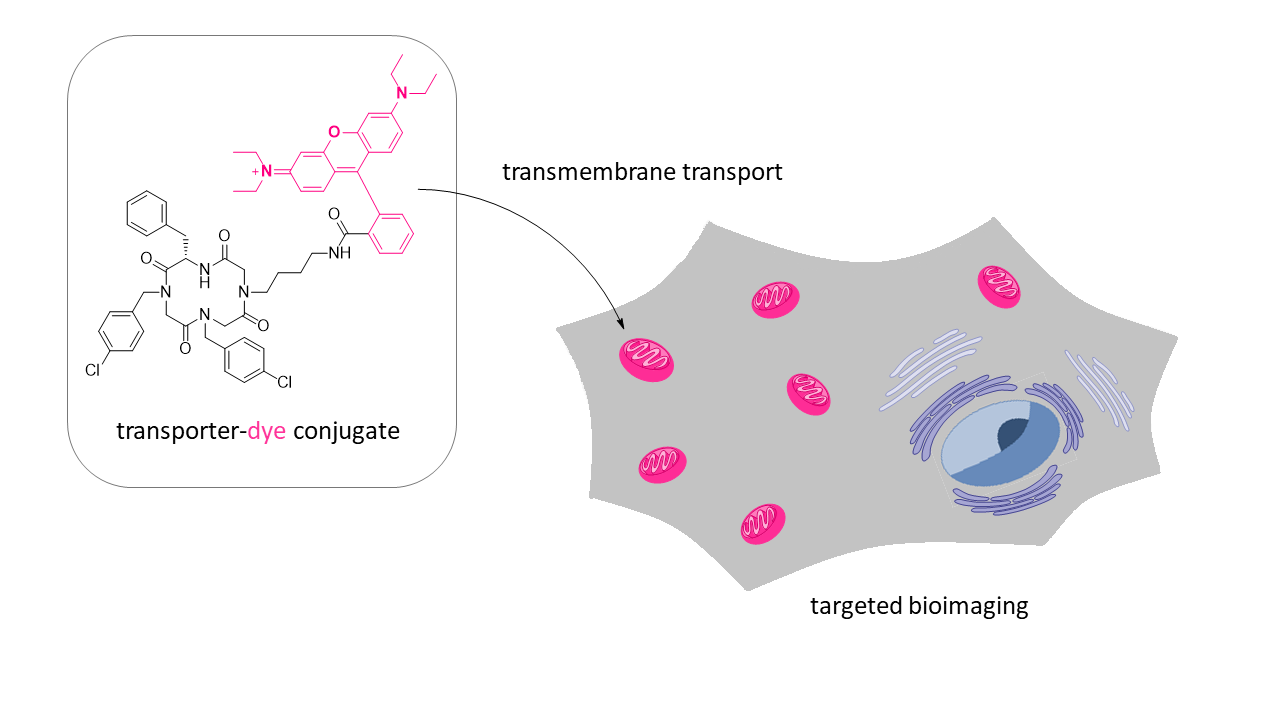
MSc. Claudine Herlan
- Doctoral researcher
- A1
- Group: Prof. Bräse
- Phone: 42905
- claudine herlan ∂does-not-exist.kit edu

Cyclic peptide-based transporters for cellular imaging
- Project Group:
Project are A, project A1
- Startdate:
09/2017
Cell imaging is a comprehensive and interdisciplinary field of research possessing the ability to elucidate the processes of life. For the targeted addressing of various cellular organelles or defined tissues, needed for the enlightenment of cellular mechanisms, new, dye-conjugated, cell‑penetrating molecules are constantly needed.
This project deals with macrocycles that undergo transmembrane transport. The single structures are hybrids composed of peptide and peptoid building blocks ensuring low cytotoxicity and high target affinity. The incorporation of different side chains makes the molecules tunable in polarity, shape and size. Conjugation of the designed transporters to the well investigated fluorescent dye rhodamine B enables the subsequent study of their cell‑penetrating properties. The latter is done by biologists within the RTG. Macrocycles, identified as potent transporters, are then modified by linking further fluorophores to increase signal strength and to lower cytotoxicity.
Started in January 2018, the project has been focused on hydrophobic transporters. An example is given in the figure above. Aromatic amino acids as well as anilines and aliphatic side chains were incorporated into four- and six-membered macrocycles. Biologically tested derivatives showed an efficient transmembrane transport in HeLa cells and fine signal strength. Counterstaining of mitochondria revealed accumulation in these organelles. Transport into mitochondria was true for every hydrophobic macrocycle tested.
But the story is not over yet. The modular structure of the peptide-peptoid-hybrids gives rise to an infinite number of derivatives that are still unexplored. We hope to find not only organelle‑ but also tissue‑specific macrocycles that help to enlighten the breathtaking processes of life.
